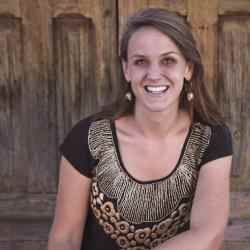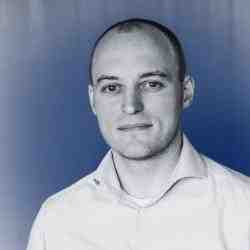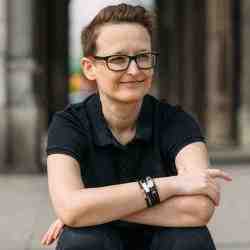Einführung
Dr. Roberto Kikawa has developed an affordable and sustainable system that is bringing teams of medical professionals to offer healthcare and health education services to low-income rural communities in Brazil.
Die neue Idee
Addressing the lack of health services in remote rural communities, Roberto is making healthcare services available to rural and impoverished populations through the installation of advanced medical clinics. In his project a team of medical professionals and specialists enter each municipality for short periods of time and install either mobile or fixed clinics to complement and, in many cases, transform the existing public medical facilities. Their work also includes an educational element that seeks to raise public awareness and understanding of healthcare issues, with a focus especially on preventive medicine. Roberto is demonstrating that by bringing needed medical care with necessary equipment and comprehensive health education, he can empower individuals to become actively involved in improving the healthcare of their community.
As a result of the high-quality of his operations and a streamlined management strategy that promotes more efficient patient consultation, Roberto’s project has become an attractive partner for public health institutions, community organizations, and private local sponsors. These associations enable Roberto to expand the project’s reach, achieve financial sustainability, and create new opportunities for widespread impact. By leveraging the economic and institutional resources of the Brazilian national healthcare system (the Sistema Único de Saúde), the project has been able to grow rapidly. Roberto is planning to replicate the model on an even larger scale to remote areas of the country with new clinic designs, and he is studying alternative business models in order to expand abroad.
Das Problem
Although in recent years the Brazilian government’s healthcare system has made great strides in improving services to large urban centers, the program still fails to deliver care to rural areas, even though these populations are largely dependent on the national system. The municipal governments, which are the main service providers and principle healthcare administrators for the national system, lack both the funds and the access to high-quality equipment. The care that does exist is often poor and rudimentary, and an excessive strain on the low capacity means that some rural patients must wait months for an appointment and years for necessary surgeries.
Beyond just a lack of access to the public health system, the healthcare practices do not encompass a vision of long-term comprehensive health. Treatment is often narrow and reactive, addressing only immediate symptoms, rather than taking a more comprehensive diagnosis of the patient. Although investment in prevention—that is, care that prevents illness or detects it in its early stages—promotes positive wellness practices and in the long run is more cost-effective, in Brazil preventive measures are often ignored or rejected. As a result of patients’ ignorance about medical procedures and a distant, passive relationship with their doctors, individuals are not actively engaged in their own health and the healthcare of their communities at-large. Many problems that are perceived as illness are, in fact, physical reactions to broader socioeconomic factors such as issues at work, with family, or personal finances. Specialists trained to address only immediate questions, however, may make inaccurate diagnoses because they misunderstand the complete story of the patient’s health.
Current public health policies in the rural areas do not begin to address this issue of preventive medicine, and it is uncommon to find healthcare professionals trained in this subject. The communities themselves are poorly educated in medical matters and even in basic disease prevention, rendering the most disadvantaged people also the most vulnerable to preventable illness. With neither the medical resources capable of diagnosing problems nor a social consciousness of the importance of health, rural communities cannot provide the most basic services to its people.
Die Strategie
Incorporating his lengthy and diverse experiences in bringing healthcare to disadvantaged communities, Roberto has designed a healthcare system that supplies high-quality treatment to remote populations in Brazil that includes a focus on preventive medicine. In 2008 Roberto piloted his project, the Center of Education and Health Integration (CIES) Project, as a wholly autonomous initiative under the legal framework of a citizen organization that he and a group of concerned doctors began in 2004 to address the needs of disadvantaged fellow Brazilians. Roberto then formed an integrated team of medical professionals and a work plan with a cost structure that charges all clients the same rate for a medical consultation, breaking down a culture of paying premiums for specialists’ services rather than enlisting general physicians. The project operated, as it still does, with efficient information processing to reduce wait and appointment times, in addition to transparent accounting oversight. After achieving remarkable success with this approach, Roberto launched his strategy on a larger scale to the project that it is today.
The CIES Project involves the entire community when establishing a clinic in a new municipality. Roberto’s team first presents the initiative to the municipal government and to any other interested stakeholders. After conducting initial site visits, they assess unmet healthcare needs and decide which intervention strategy might best suit the city’s needs. Once they confirm an alliance through an official agreement with the national healthcare system, CIES seeks partnerships with private sector organizations to help cover operating costs. The project also builds relationships with community organizations that recommend individuals to work as receptionists, cleaners, nurses, or as other paid employees in the clinics. Local companies sponsor the assorted mobile clinic expenses of moving, maintenance, insurance, transportation, and food and lodging for the crew. CIES caregivers highlight the initial diagnosis of the general practitioner, who will later forward the patient to a specialist or to a specific procedure. This is a preventive care practice that is rarely performed in Brazil, one that emphasizes the role of the primary care physician.
Roberto’s team establishes one of three different mobile units or a fixed clinic in the municipality depending on its particular circumstances. The first mobile intervention he designed, the Health Truck, is installed in a 100 square meter area and is equipped with modern surgical rooms and technology that can be tailored to the specific medical needs of the community. The separate Health Van transports medical exam equipment in special cases and is later set up and operated close to a permanent medical facility, such as community health centers or hospitals. Third, the CIES Project is designing a Health Box consisting of several small containers that can be used to support equipment for three different medical specialties and that are easily shipped in boats, trucks, or other modes of transportation. In some cases, Roberto installs fixed units that can address more long-term health needs. Currently, two municipalities in the state of Sao Paulo and a third in the state of Santa Catarina operate permanent CIES units.
In addition to supplying high-quality medical examinations and treatment to individuals, the medical professionals will also offer educational materials about assorted topics in healthcare. This information is meant to raise citizens’ awareness about disease prevention, basic personal care, the importance of medical treatment to their lives, and to the welfare of their community at-large. Such increased consciousness is the CIES Project’s ultimate objective, to establish a self-sustaining model of integrated health in communities even after the mobile clinic is dismantled.
Partnerships with community organizations, contracts with the public sector, and corporate donations supplement the collection of fees to fund Roberto’s program. The Health Truck is its main source of revenue, which is generated by providing basic services to the national healthcare system and by receiving sponsorships from local companies. About 20 percent of this money is reserved to systematize the project, fuel its growth, and help design new strategies.
In each community in which it operates, the CIES Project creates a deep impact, while at the same time providing coverage to large numbers of individuals. The public, whether participating as patients or as employees in the clinics, begin to feel like direct contributors to and participants in their healthcare system, as they reestablish relationships with doctors or as they work in the clinics. Over the past few years CIES has satisfied some 70 to 100 percent of the unmet health needs in a community, and its impact has grown from 4,000 clients served in 2009 to 20,000 the following year in nine cities in the states of Sao Paulo and Paraná. By the end of 2011 Roberto expects that his work will have reached 40,000 people due in part to his expansion to Santa Catarina and Rio de Janeiro states.
By taking advantage of the national healthcare system’s extensive network, Roberto has created an extremely replicable project that has great promise for taking hold throughout Brazil. The pilot alone generated a spontaneous demand from fifty more cities, and over the next few years, he hopes to deploy some sixty units nationwide, mostly as mobile clinics. The Health Box is a particularly appealing facility for the most isolated communities. Having received interest from Angola, Venezuela, and East Timor, Roberto is evaluating other strategies and administration models to spread the project abroad. Once Roberto has tailored his model to these different local contexts, he could eventually cause transformational impact in rural healthcare worldwide.
Die Person
In his early years, Roberto learned from his Japanese father the values of concentration and discipline, and from his mother, the importance of social responsibility. As member of the Boy Scouts, an organization that emphasizes these values, he became a leader in his troop and acquired skills in strategy and team formation. Roberto also took on a role in first aid, an experience that later encouraged him to become a doctor. This career decision was also influenced by his father, who himself could not finish medical school but instilled in Roberto an interest in the healthcare field.
As a medical student, Roberto had to dedicate much of his time to his studies and overcome the limitations of a mediocre primary education in public schools, but he was dedicated to becoming a competent and caring doctor. Soon after he was accepted to study medicine at the State University of Londrina, Paraná, his father grew seriously ill. This experience brought them closer, especially after Roberto watched a compassionate Japanese doctor take care of his convalescent father. Roberto came to regard his father’s caregiver as a model for his own work as a physician.
After completing specialized studies in surgery, Roberto joined the team at the elite Syrian-Lebanese Hospital in Sao Paulo, where he was exposed to cutting-edge medical technology. Searching for opportunities to serve the underprivileged, however, he moved to a hospital serving a disadvantaged neighborhood in the city. There he built an advanced and cost effective surgical center with the latest equipment available and a strong medical support staff to address a clientele largely dependent on the public healthcare system. This experience combining high-quality healthcare and management became well-known, and he was invited to apply his methods in other hospitals. Roberto also introduced new technology in his hospital facilities that he learned while studying medical systems abroad.
The experience Roberto had in delivering advanced healthcare through the public system, which was also economically sustainable, inspired him to form a strategy to bring such high-quality care to rural populations. The program that emerged was the Health Truck, the first of his mobile clinics. He crafted a business plan and studied the public healthcare system in depth while also looking for private initiatives that could contribute necessary technology. Roberto is dedicated to spreading the CIES model as a decentralized means to provide high-quality care to underserved rural populations.




